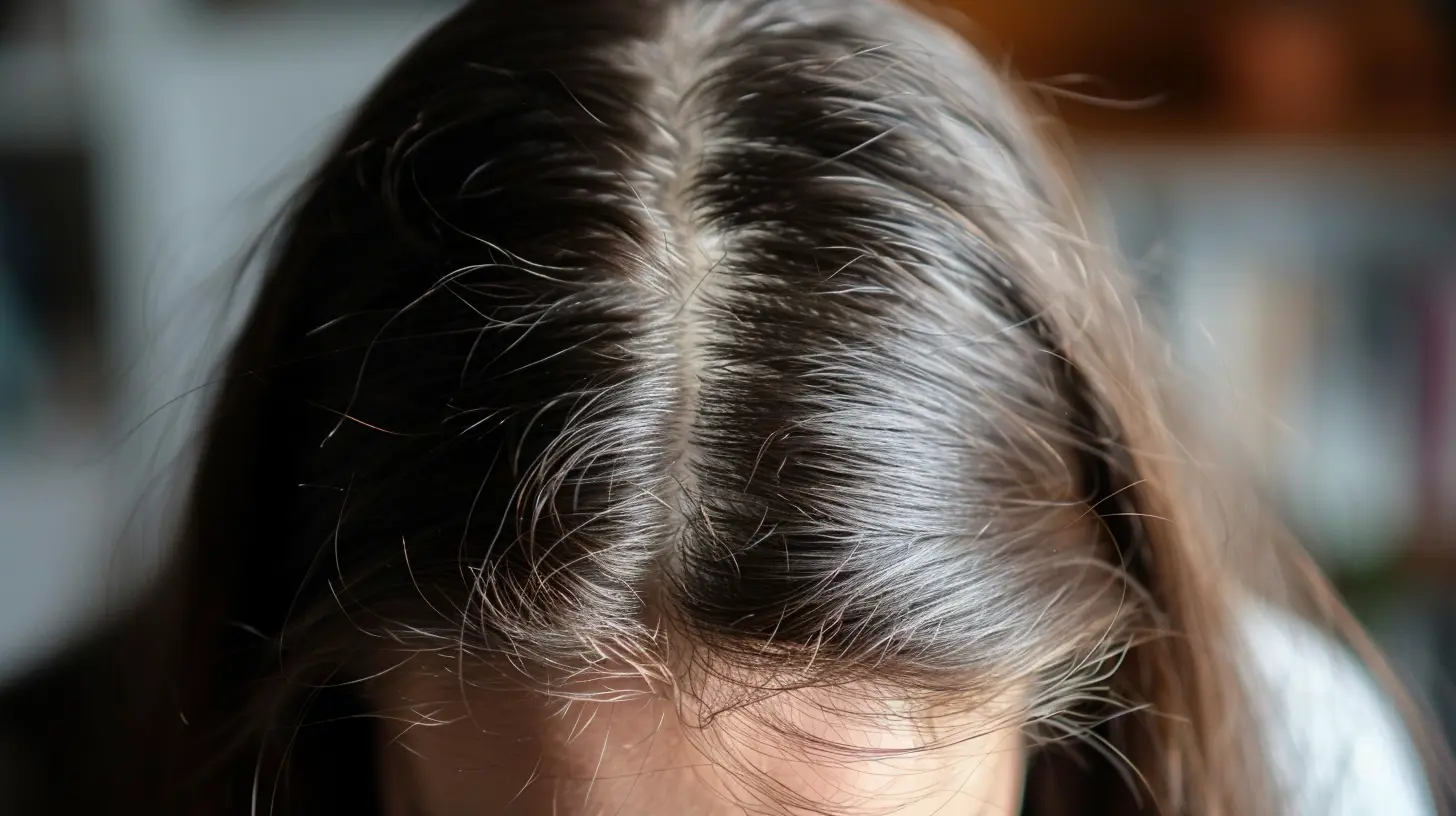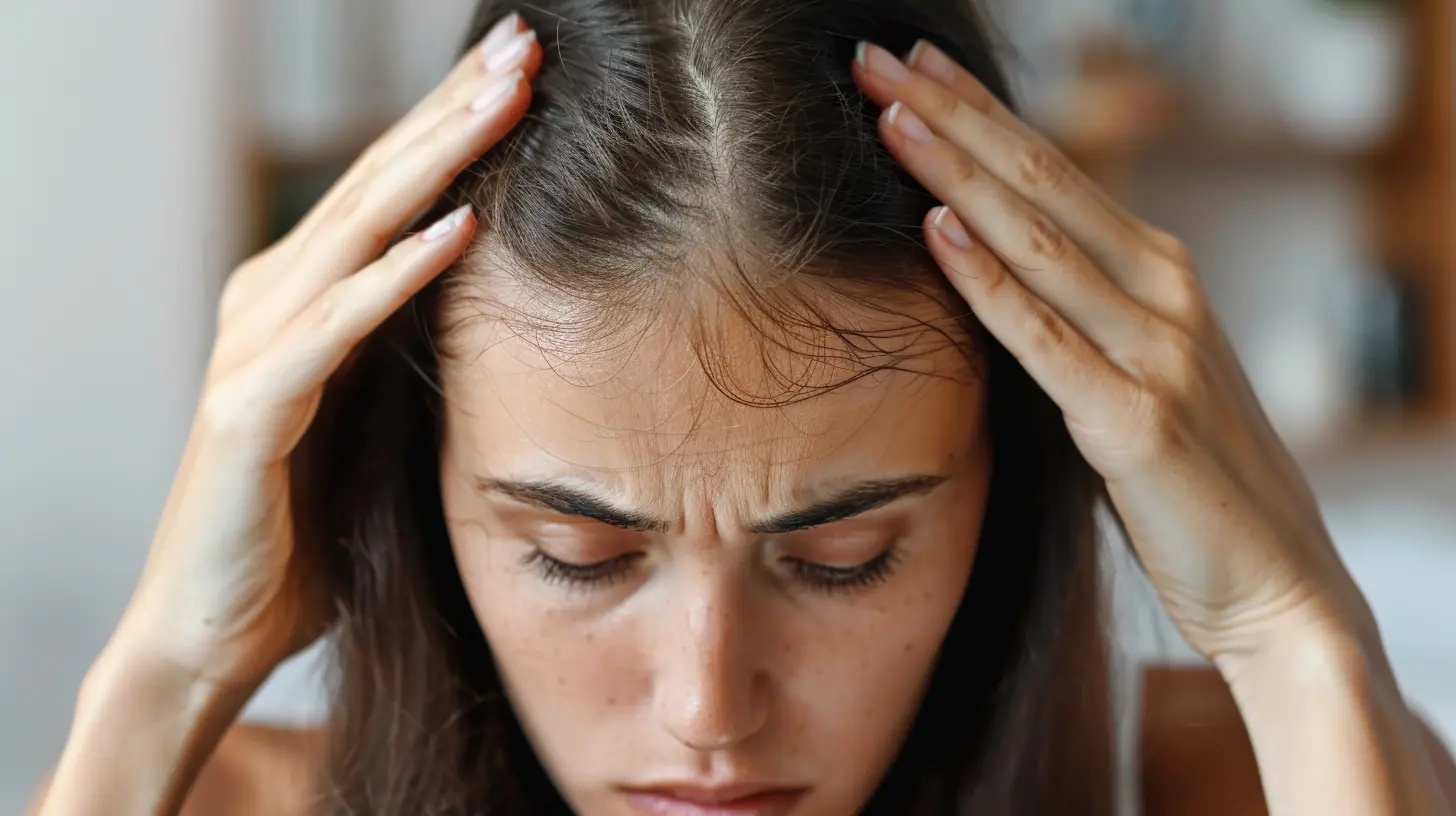What No One Tells You About Postpartum Hair Loss
12 August 2025
So, you've just had a baby. You're sleep-deprived, knee-deep in diapers, and riding the emotional rollercoaster that is new parenthood. Then, just when you thought things were starting to settle down—bam! Your hair starts falling out. In clumps. Every time you brush it. Every time you shower. It’s enough to make you panic and wonder: “Is this normal?”
Spoiler alert: Yes, it is. But here's the thing—no one really talks about it. You're not alone if postpartum hair loss has taken you by surprise. Let's get real about what’s happening to your body, why that beautiful pregnancy mane is suddenly MIA, and what (if anything) you can actually do about it.
What Exactly Is Postpartum Hair Loss?
Let’s break it down. Postpartum hair loss—also known as postpartum alopecia—is the excessive shedding of hair that many women experience after giving birth. It's not permanent baldness, and it's not your body "failing." It’s just another weird thing your hormones do that no one warns you about.During pregnancy, your estrogen levels skyrocket. That estrogen surge signals your hair to enter a prolonged growth phase (called the anagen phase). Translation? Your hair gets thick, shiny, and lush—hello, pregnancy glow!
But after you give birth, estrogen levels plummet. Fast. Like, drop-off-a-cliff fast. This hormonal crash pushes your hair into the shedding phase (telogen phase). As a result, all that hair that should have fallen out gradually over the last 9 months suddenly starts exiting your head like it missed the last train.
When Does Postpartum Hair Loss Start?
Most new moms notice hair loss around 2 to 4 months after delivery. It usually begins subtly—maybe a few extra strands in your brush or on your pillow. But before long, it can feel like you're shedding more than your dog in summer.Don’t be alarmed if it worsens before it gets better. For most women, it peaks around 4 months postpartum and starts to slow down by 6 to 9 months. By your baby’s first birthday, your hair should be well on its way back to normal—emphasis on should. Everyone is different, and some women may notice changes for longer.
Why No One Warns You About It
Here’s the truth: Pregnancy and childbirth come with a truckload of physical and emotional changes. Hair loss seems like a small fry in a sea of worries about breastfeeding, diaper rash, postpartum depression, and sleep deprivation.Plus, it’s just not talked about much. Your OB-GYN might mention it in passing—if at all—and parenting books may gloss over it. Many moms don’t even realize it’s a thing until they’re standing in the shower, watching a hairball slide down the drain and thinking, “What the actual heck?”
How Much Hair Loss Is “Normal”?
On average, women lose about 50 to 100 hairs per day. (Yes, it’s normal.) But postpartum moms? You could be losing up to 400 hairs a day. Sounds terrifying, right?But let’s be clear: This is usually temporary and reversible. You're not going bald. You're not broken. Your body is still recalibrating from the colossal task of growing and birthing a tiny human.
Still, if your hair loss feels extreme or continues well past the one-year mark, it’s worth checking with your doctor. Conditions like thyroid imbalance, iron deficiency, or even postpartum stress can mimic or worsen hair loss.
What Postpartum Hair Loss Looks And Feels Like
One word: frustrating.You might notice a thin ponytail, sparse spots around your hairline, or temples that weirdly resemble your baby’s bald patches. Your bathroom might start looking like a hair salon floor. And don't get me started on the clogged drains—yikes.
Some moms even report their hair texture changing. Curly hair might go limp; straight hair might go frizzy. It’s like your hair has its own version of a midlife crisis.
Emotionally, it can be hard. Your identity may feel shaken. You've just gone through this monumental life change, and now this? It’s okay to feel upset, even if it seems “superficial.” Hair is personal.
Can You Prevent Postpartum Hair Loss?
Honestly? Not really. It’s mostly a waiting game. Since it’s driven by hormones, you can’t completely prevent it—but you can help your body bounce back with some TLC.Here’s what you can do:
1. Eat Well
Your body’s been through a lot and needs nutrients to heal and recover. Focus on a balanced diet filled with:- Protein (eggs, chicken, lentils)
- Iron-rich foods (spinach, red meat, legumes)
- Omega-3 fatty acids (salmon, walnuts)
- Vitamin D and B-complex vitamins (a good whole-food prenatal can help)
Pro Tip: You don’t need fancy supplements labeled “hair growth miracle.” Stick to nourishing whole foods and consult your doctor before adding anything new.
2. Be Gentle With Your Hair
Now’s the time for a haircare routine that’s more “spa day” and less “speed styling.”- Use a wide-tooth comb
- Avoid tight ponytails and braids
- Skip the heat tools (sorry, curling iron)
- Use sulfate-free shampoos and conditioners
Think of your hair like your newborn—fragile, sensitive, and not a fan of rough handling.
3. Scalp Massage
It sounds a bit woo-woo, but hear me out. Massaging your scalp a few minutes a day can increase blood flow to the follicles and may support hair regrowth. Use oils like coconut or castor oil if you're feeling fancy.4. Get Your Levels Checked
Sometimes hair loss is worse because of issues like:- Thyroid problems (very common postpartum)
- Low iron or ferritin levels
- Vitamin D deficiency
A simple blood test could point you in the right direction. Always talk to your healthcare provider before jumping into Google-induced self-diagnosis mode.
5. Cut or Style Your Hair Differently
A new haircut can actually make a world of difference. Layers, bangs, or even a short pixie cut can help camouflage thinning areas and make you feel like “you” again.The Emotional Toll No One Talks About
Let’s get honest here—postpartum hair loss isn’t just about appearance. Losing your hair can mess with your confidence, your sense of self, and yes, your mental health.After birth, many women already feel a disconnect between their body and identity. Hair loss can be the straw that breaks the camel’s back. It’s okay to mourn the loss of your thick, glossy pregnancy hair. It’s okay to feel weird about your reflection. And it’s okay to reach out and talk about it.
Remember: You’re not being vain. You’re being human.
When Should You See A Doctor?
While postpartum hair loss is totally normal, it’s smart to talk to your healthcare provider if:- Hair loss continues past 12 months
- You’re seeing bald patches or circular hair loss
- You notice other symptoms like fatigue, dry skin, or mood changes
These could be signs of other underlying issues like hypothyroidism, anemia, or alopecia areata.
Will My Hair Ever Go Back to Normal?
The good news? Yes, for most women, the shedding stops and the regrowth kicks in within a year. But your “normal” might look a little different than before.Your hair texture, thickness, or even your hairline may shift. Some women keep the baby hairs around their temples for years. Others find their curls loosen or their waves change direction entirely. Your hair may grow back, but it might have a new personality.
Kind of like your baby—familiar, but full of surprises.
Real Talk: You're Still Beautiful
If no one’s told you this today, hear it from me: You’re doing an incredible job. Your body just built a human being. If a little hair loss is the price to pay for that miracle, it’s worth it—but that doesn’t mean it doesn’t suck.So give yourself grace. Talk about it with fellow moms. Laugh about the hair tumbleweeds on your bathroom floor. Grab a cute headband. And remember: This too shall pass.
You’re not losing your hair—you’re shedding the old to make room for the new. And that new version of you? She’s strong, she’s powerful, and she’s beautiful—baby hairs and all.
Quick Recap
- Postpartum hair loss is totally normal and usually starts 2-4 months after childbirth.- It happens because of a rapid drop in estrogen levels after delivery.
- You may lose up to 400 hairs a day (seriously), and it can feel overwhelming.
- Most moms see improvement by 6-12 months postpartum.
- Good nutrition, gentle hair care, and a little patience go a long way.
- Always consult a doctor if hair loss seems excessive or lasts too long.
- And remember: You’re not alone. It’s okay to talk about it.
all images in this post were generated using AI tools
Category:
Postpartum RecoveryAuthor:

Tara Henson
Discussion
rate this article
1 comments
Olympia Powell
Postpartum hair loss: the universe's way of reminding you that your hair can have a dramatic exit too! Who knew my hair had aspirations of being a runway model?
August 28, 2025 at 2:41 AM

Tara Henson
Haha, what a clever way to put it! Postpartum hair loss can indeed feel like a dramatic exit. Thanks for sharing your humorous take!


